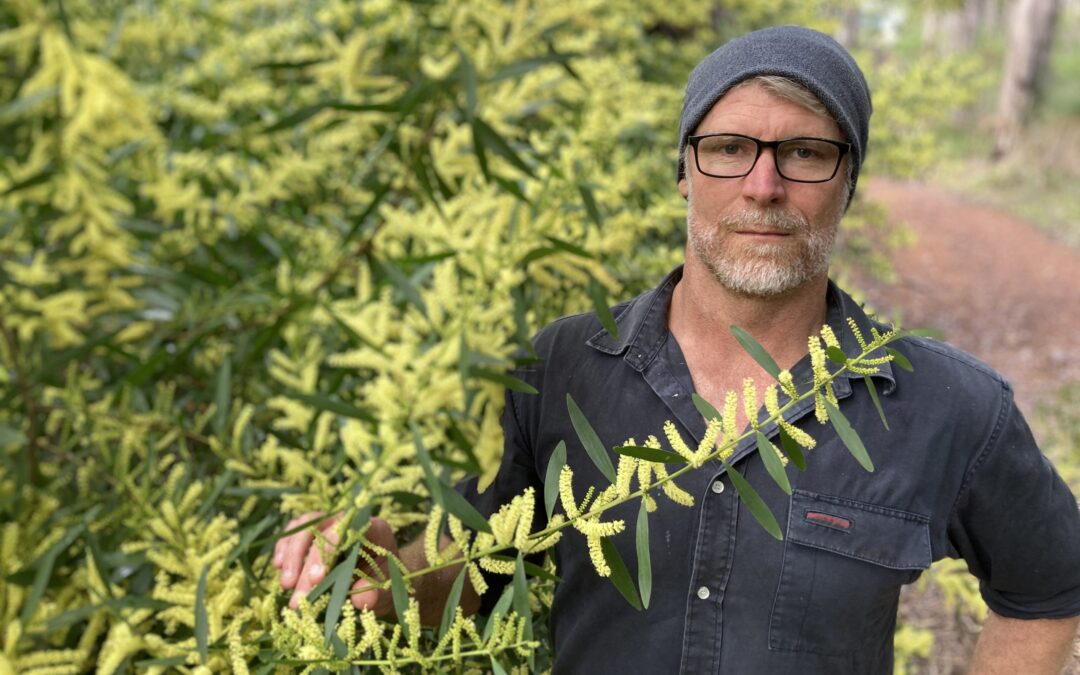One of our region’s worst weed trees – Sydney Golden Wattle – is blooming and the message from Nature Conservation Margaret River Region is to remove these weedy invaders now while they are easy to identify.
The worst weedy trees in the region are in the firing line thanks a new two-year Woody Weeds Campaign launched by Nature Conservation targeting some of our most problematic weedy trees. Most are from eastern Australia but don’t belong in our region, where they can dominate entire areas of bushland. They include three “weedy wattles” – the Sydney Golden Wattle, Flinders Range Wattle and Australian Blackwood – as well as Victorian Teatree, Sweet Pittosporum and olives.
Right now, Sydney Golden Wattle (Acacia longifolia) is at the top of the hit list because it’s in full flower and easy to identify. These trees which are native to New South Wales grow up to 10m in height, with elongated leaves that are 5cm-25cm in length and yellow, cylindrical flowers from June to November. It reproduces from seeds dispersed by water, birds, ants, soil movement and dumping of garden waste – so landholders must dispose of prunings responsibly in FOGO bins or by taking green waste to the tip. To remove, hand-pull seedlings, fell mature plants close to the ground, or ringbark older trees.
Watch our comprehensive video that puts the spotlight on how to identify Sydney Golden Wattle, how to tell it apart from similar native trees that belong in the region, and how to eradicate it.
For landholders who need assistance controlling woody weeds on their property, Nature Conservation’s bush regenerators are available for fee-for-service contract, with all profits going directly back into funding the conservation group’s work protecting our environment.
Nature Conservation’s biodiversity officer Peta Lierich urged everyone from suburban gardeners to bush block owners to help stop the spread of the invaders. “Everyone knows about arum lilies, but weedy shrubs and trees are also one of our biggest threats to native bush,” she said. “They can spread vigorously. They outcompete local trees and shrubs. And their seed is rapidly spread by birds and can last for decades in the soil seedbank, causing problems for years to come.”
As part of the campaign, Nature Conservation will run free workshops for the identification and removal of woody weeds, with information, tips, photos and video also shared on social media and online every week.
The campaign is funded by the WA Government’s State Natural Resource Management Program, and includes funding to be spent on a 50-50 cost sharing basis with landholders located close to high priority bushland, reserves or national parks. “If your property has a woody weed problem and is close to large areas of bushland or a national park, get in touch because you could be eligible for funding to bring in contractors to remove the shrubs or trees,” says Ms Lierich. To enquire, email peta.lierich@natureconservation.org.au.
“We want everyone in the community to be able to ID our worst woody weeds, which in some cases can be confused with natives that belong here,” she says. “Once you’ve identified the invaders, you can either hand-pull seedlings or remove larger shrubs and trees. Bigger jobs may need qualified contractors or the Nature Conservation Bush Regeneration Team to bring an infestation under control, but it’s worth it when you think of the threat to the surrounding forest.”

